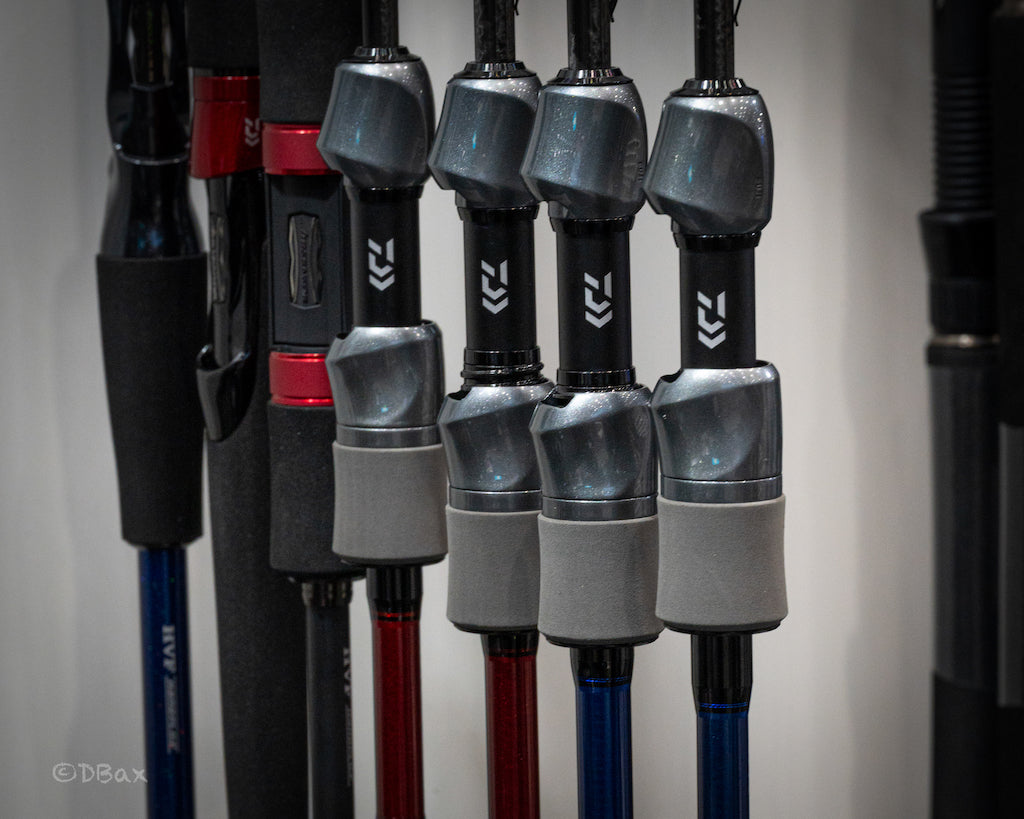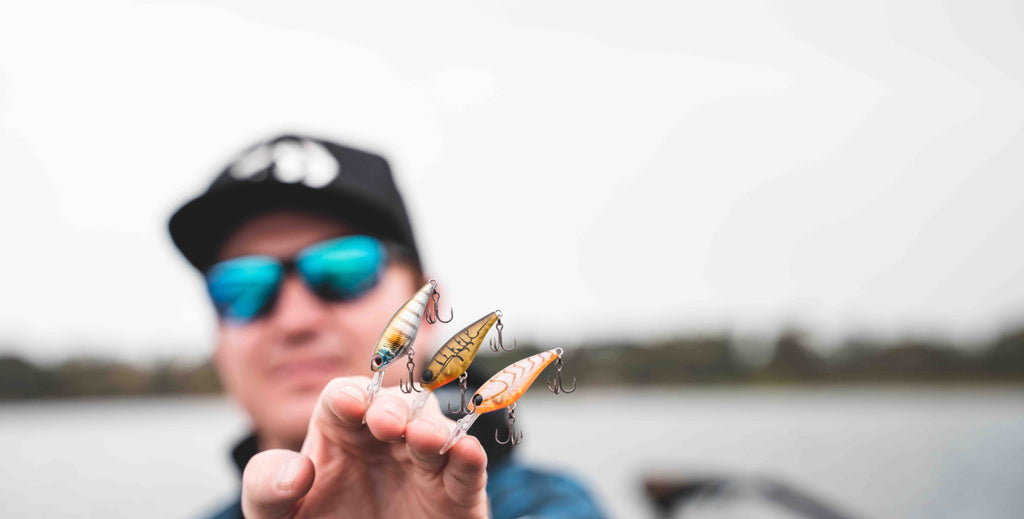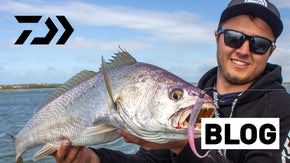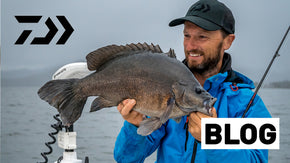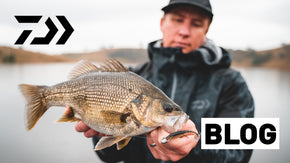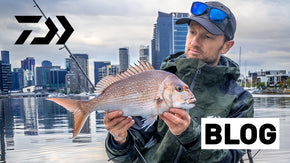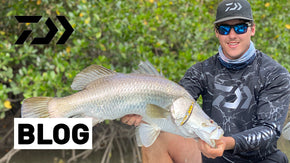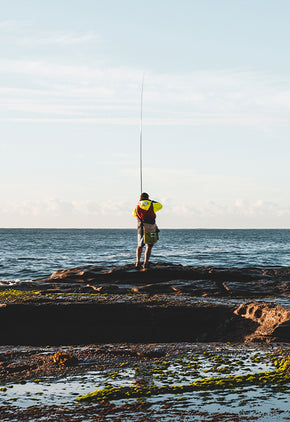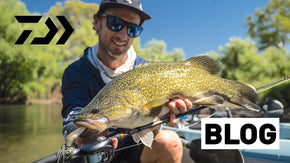Posted 03th August 2022
How to Use Soft Plastics in Saltwater


By Robert Thornton
Of all the developments to the Australian tackle industry, none have had a greater impact than the advent of soft plastics. As these soft baits started to flood the Australian market, we also saw a spike in soft plastic specific tackle and accessories, and this opened up a whole new world for even the most experienced anglers..
Daiwa Australia have now entered the soft plastic market, and with their understanding of Aussie anglers’ and their target species, have managed to develop a range that is leading the way. With the Bait Junkie range they have addressed common problems and limitations with other soft plastics, while also demonstrating what else is possible with these marvelous inventions. But before we get into that, let’s take a look at Australia’s soft plastic history.

A Soft Past
The concept of soft baits has existed since the late 1940s, with early versions made from hard rubber; the same stuff used to make tyres! Lure makers gradually shifted to soft plastic molds to make their soft baits, and by the 1970s, soft plastics lures were fairly widespread in the United States.
During this time, clued-in Australian anglers had just started to become aware of these curious creations, and began using them on a range of native species. Innovative though they were, many of the creations were designed for American and European fish. It wasn’t until the late ‘90s and early 2000s that local tackle companies started to make soft baits specifically for Aussie species. Their early success in tournaments was enough to cause a frenzy in the community, and soon everybody wanted to find out for themselves just how effective and versatile these things really were.
Modern Soft Plastics
These days soft plastics make up a part of most anglers’ tackle collections, coming in just about every colour, size and shape imaginable – there really is a soft bait for any situation! Over time developers have noticed areas where they could be improved, and by listening to angler feedback, they’ve managed to produce soft plastics that are so lifelike and durable that it’s almost cheating!
The Daiwa Bait Junkie range was developed by Australians to suit local conditions for local fish. They are affordable, highly durable, versatile, user-friendly and customisable. Importantly, they catch fish! What’s also exciting is that this range is continuing to develop, so we can expect new colours, shapes and sizes in the future!
Brisbane-based Daiwa Pro team member Nabeel Issa uses a lot of soft plastics, and has been using Bait Junkies since their very beginning.
“The big thing about Bait Junkies for me is the fact that they have inbuilt scent, and they’re very durable,” he explains. “They’re also very user-friendly, the only real skill involved is in rigging them properly, but once you learn that they’re very easy to use,” he continues.
“My six-year-old son can rig one on a jighead now, so it isn’t that bad at all!”
Speaking of rigging, all Bait Junkies come with rigging lines to help you thread them onto a jighead straight and true. It’s a small thing, but it makes a huge difference!
Jesse Rotin from Melbourne has also taken to Bait Junkies like a duck to water, and reckons they’re standouts in the Aussie market.
“I find they have more body action than other plastics, especially the Jerkshads and Minnows,” he says, “Even at a slow retrieve, you get more wobble through the body, and not just the tail.”
Daiwa’s Elastomax material that Bait Junkies are made from is incredibly strong and buoyant, meaning they look alive even at rest, and will last longer than weaker designs. Inferior designs will sit lifeless on the bottom, and degrade faster when they get bit or come into contact with structure. The Elastomax results in a far more economic plastic that spends more time in the water attracting fish!
“The buoyancy allows them to sit with the tail up when they’re on the bottom,” Nabeel explains, “So even at rest they’re still doing stuff – they’re still fishing!”
Jesse also knows this is a factor for their success.
“For people who are new, it means you don’t have to second guess yourself about how much action you’re imparting,” he says.

Soft Plastic Basics
The inshore estuarine and beachfront areas are perfect places for newbies to soft plastics. Even without a boat or kayak, anglers can still tangle with quality fish from pretty much any corner of this continent. Plus it’s a very relaxing pursuit for the time-poor or those on a budget. A light spin set up in the 2-5kg range with a 2000-3000 size reel is perfect for shallow inshore work. Daiwa’s Aggrest Pre-Mounted Rod & Reel Combos offer high-quality and affordable options for anyone wanting to take the guesswork out of tackle selection!
Once you’ve got your light spin set up and a handful of plastics and different jighead weights, you’ve got just about all you need for a bit of prospecting.
While simply wandering down to the nearest sandbank, tossing a pre-rigged plastic into the water and winding it straight back might catch you the odd fish, it’s not really using these tools to their full potential. Thinking about your target species (if you have one) and how your lure will intercept them is a key factor to success.
With species such as bream, flathead, whiting and pinkie snapper for example, you’ll want to think about keeping the lure in the areas where they’re feeding.
“Downsizing your jigheads might be the go,” Nabeel explains, “Fishing slow, making sure your plastic hits the bottom every so often and giving it hang time as it falls is important for many saltwater species.”
For a lot of estuary fish, anglers like to fish with the lightest jighead they can get away with while still keeping contact with the bottom, and this is said to make the soft plastic appear more natural in the water. In an estuary or shallow bay environment, small Bait Junkie Minnows in 2.5” and 3.2”, along with the Bait Junkie 2.5” Grub are great tools for searching the shallows. When rigged lightly with jigheads between 1/16-1/8oz (depending on the current, and depth) they become a nice slow-sinking snack for the above species.
“I usually like to fish natural colours,” Jesse says, “Baitfish type colours such as Ayu, Pearl Trout and Copper Flash imitate a lot of the baitfish in my area.”
“If the water is discoloured though, maybe from rain or big tides, I might try bright colours that stand out in the dirty water,” he adds.
Nabeel also tends to stick to natural colours in the saltwater, but has a little trick up his sleeve for when the water runs dirty.
“Sometimes I might try a dark colour in the dirty water,” he says, “I reckon this can give a silhouette effect.”
Fishing slowly in the salt for bread and butter species is great fun, but when the pelagic fish like tailor, trevally, queenfish, bonito or Aussie salmon (and a range others) move through, you don’t have to put the plastics away! In fact, softies are a great way to imitate the bait that these fish have likely come in for. The first step to success with fast-moving predators is working out what this bait looks like, and trying your best to “match the hatch”, as many experienced anglers will tell you. In failing this, it’s a good idea to go small with your plastics initially, and slowly try larger presentations if you don’t have much early success.
Given that you might be needing to cast your plastic out a little further to where you can see fish feeding, heavier jigheads are a good idea. Using the same plastics as before but with 1/8-1/4oz heads will allow longer casts, and you’ll be able to work them quickly and erratically without them coming out of the water mid-retrieve.
Anglers specifically targeting larger pelagic species such as tuna, kingfish, giant trevally and more will often reach for the Bait Junkie Jerkshad, which is available in 5” and 7” sizes.
“I’ve chased kingfish in the west of Victoria with Jerkshads,” Jesse says, “and I’ve found that when winding the 7” models back, they have so much wobble that they look different to any other lure on the market!”
Once again, in the right conditions these larger fish can be targeted without a boat or kayak, and most coastlines have areas where big ocean predators occasionally venture in close in search of prey.

Mix it Up, Listen to the Fish
These are words of advice that are given out freely, but what do they actually mean? Adages like these are applicable to all types of fishing, but versatile presentations like soft plastics can really allow an angler to ‘mix it up’!
As anglers, we try to apply rules to everything; every fishing spot, every species, every lure!
“The truth is things are never set in concrete,” Jesse says, “I would say to newcomers to start off fishing the way you’re comfortable with, and then mix it up, especially if you don’t have much early success”
“Let it sink a bit more, or fish it faster, and then maybe slower – mix your plastics too!”
Varying your approach as you go is a great way to find out what the fish want on the day. This is how you ‘listen to the fish’. Once you start catching, you’ll know you’re giving them what they want.
Going a little deeper with this theory, it’s important to pay close attention to any bites, chew marks on the plastic, or fish following it back to the rod tip. From this you can conclude that you have the fish’s attention. Trying little variations of what’s drawing attention until these bits of ‘interest’ turn into hook-ups is how anglers turn slow days into fast-paced and action-packed days they remember for a long time.
The World’s Gone Soft!
It’s clear that soft plastics have changed the fishing world, and they will continue to drive change as they evolve and open up more and more fishing opportunities. This article only covered a fraction of what is possible with these amazing inventions, and hopefully you’ll discover this as you dip your toe into the soft plastic world.
If you’ve ever been a little apprehensive or nervous about tying soft plastics – even if you’ve never fished with lures before – don’t be! These are the perfect presentations for newcomers to the sport, and there’s no limit to what they can catch. The fact that professional anglers and tournament buffs almost always have a few ready to go even if they don’t have one tied on really makes it clear: soft plastics catch fish!


 Contact Us
Contact Us Blog
Blog About
About
